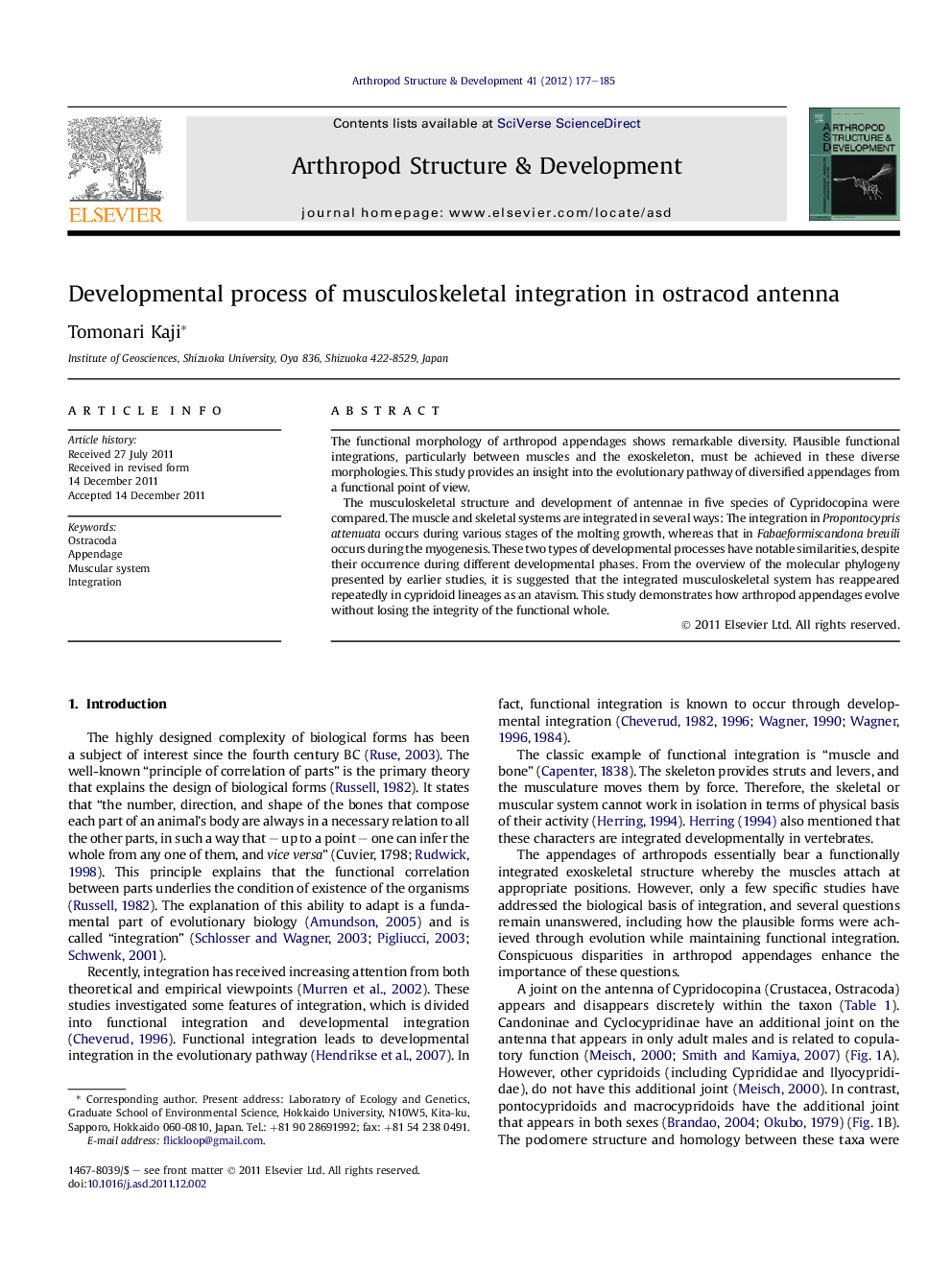| Article ID | Journal | Published Year | Pages | File Type |
|---|---|---|---|---|
| 2778773 | Arthropod Structure & Development | 2012 | 9 Pages |
The functional morphology of arthropod appendages shows remarkable diversity. Plausible functional integrations, particularly between muscles and the exoskeleton, must be achieved in these diverse morphologies. This study provides an insight into the evolutionary pathway of diversified appendages from a functional point of view.The musculoskeletal structure and development of antennae in five species of Cypridocopina were compared. The muscle and skeletal systems are integrated in several ways: The integration in Propontocypris attenuata occurs during various stages of the molting growth, whereas that in Fabaeformiscandona breuili occurs during the myogenesis. These two types of developmental processes have notable similarities, despite their occurrence during different developmental phases. From the overview of the molecular phylogeny presented by earlier studies, it is suggested that the integrated musculoskeletal system has reappeared repeatedly in cypridoid lineages as an atavism. This study demonstrates how arthropod appendages evolve without losing the integrity of the functional whole.
► The musculoskeletal structure and development of antenna in Ostracoda were compared. ► Homologous processes of musculoskeletal systems among species are discussed. ► Evolution of integrated morphology is discussed.
